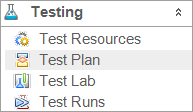HP ALM Tutorial
For those of you who don’t know — ALM stands for Application Lifecycle Managment. Basically, ALM is a place to manage requirements, test cases, and defects for software development projects.
Most will agree the quality assurance or testing team does a great job of storing and executing their test cases in ALM.
However, ALM or Quality Center can do so much more.
Here we will discuss all of ALMs modules in a simple step-by-step guide.
HP ALM Tutorial (STEP-BY-STEP GUIDE)
DASHBOARD

- Analysis View – Here is where you will build all your reports. This is where you will build your graphs, HP ALM style reports, and excel sheets.
- Dashboard View – Suppose you have hundreds of reports but in reality, you only need to see a few. A dashboard is a way to simplify all your reporting.
MANAGEMENT

- Releases – All projects have release numbers with a start and end date associated with it. Most releases have cycles in it. In this portion of the HP ALM Tutorial, we will discuss how to create releases and cycles and how to apply them.
- Libraries – Requirments, and tests change over time. Here we will discuss how to manage change with the use of libraries.
REQUIREMENTS

- How to create a requirement – here we will discuss how to create a requirement and all the requirement types.
- Direct Cover Status – A requirement should have a great test case associated with it. The direct
- Risk – here we will learn how to apply unbiased risk to each requirement.
TESTING

Test Resources – is where you store your code for automation, or data for Sprinter (a tool to speed up manual testing).





 HP ALM Defects" width="205" height="34" />
HP ALM Defects" width="205" height="34" />